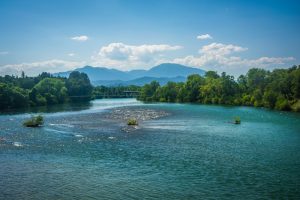Mike Wade, Executive Director of the California Farm Water Coalition, gave insight to recent developments on water resilience from memorandums signed by water districts, government entities, and interest groups.
UNITY FROM WATER DISTRICTS
In a memorandum of understanding (MOU) signed on May 8, Westlands Water District, Metropolitan Water District, and Friant Water Authority agreed to improve collaborations on surface, groundwater, transfers, and exchanges of water from the San Joaquin Valley to Southern California.
Furthermore, a second MOU was signed between Metropolitan and Water Blueprint for the San Joaquin Valley, a coalition that aims to advance water accessibility across the state. The MOU intends to identify, develop, and initiate water projects for the Central Valley to solidify water resilience.
Wade, who is also a board member of Blueprint, said that there are “big opportunities going forward for both sides.” The MOUs are the first step to initiating discussions on water supply challenges and improvements that can be made for residents, agriculture, and industry parties who all rely on some share of California water allocations.
“I think the enthusiasm that came from the Valley and the number of people that were in the room to witness the signing of these MOUs indicates a real optimism for the future of water supply,” Wade said.
The collaboration between the various entities is seen as refreshing as the state continues to spar with local groundwater sustainability agencies and agriculture entities. The MOU did not detail any specific actions that will come from the collaboration but rather indicates how parties can effectively work together behind a common vision for the San Joaquin Valley.
“I think it’s more than just biting the bullet and having to make concessions for the sake of peace,” Wade said. “It is collaboration for the sake of success.”
GROUNDWATER SUSTAINABILITY CONTINUES TAKING SHAPE
Regarding changes made between Groundwater Sustainability Agencies and the Department of Water Resources, Wade said, “I get the sense that things are beginning to improve.” Of the Groundwater Sustainability Plans submitted, Wade indicated that approximately 73 have been approved, with 13 still under consideration and six being rejected.
While the future of agriculture with relation to groundwater is troublesome due to pumping restrictions and fines within the Tulare Lake Subbasin, Wade noted that from a Sustainable Groundwater Management Act perspective, “progress is being made in getting plans done, approved and implemented.”
Groundwater recharge on farmlands is a valuable effort, and enabling water diversion to groundwater basins in high flow years is a smart approach for water resilience, Wade confirmed.
Contributing Author:
Lauren McEwen
AgNet West Intern











